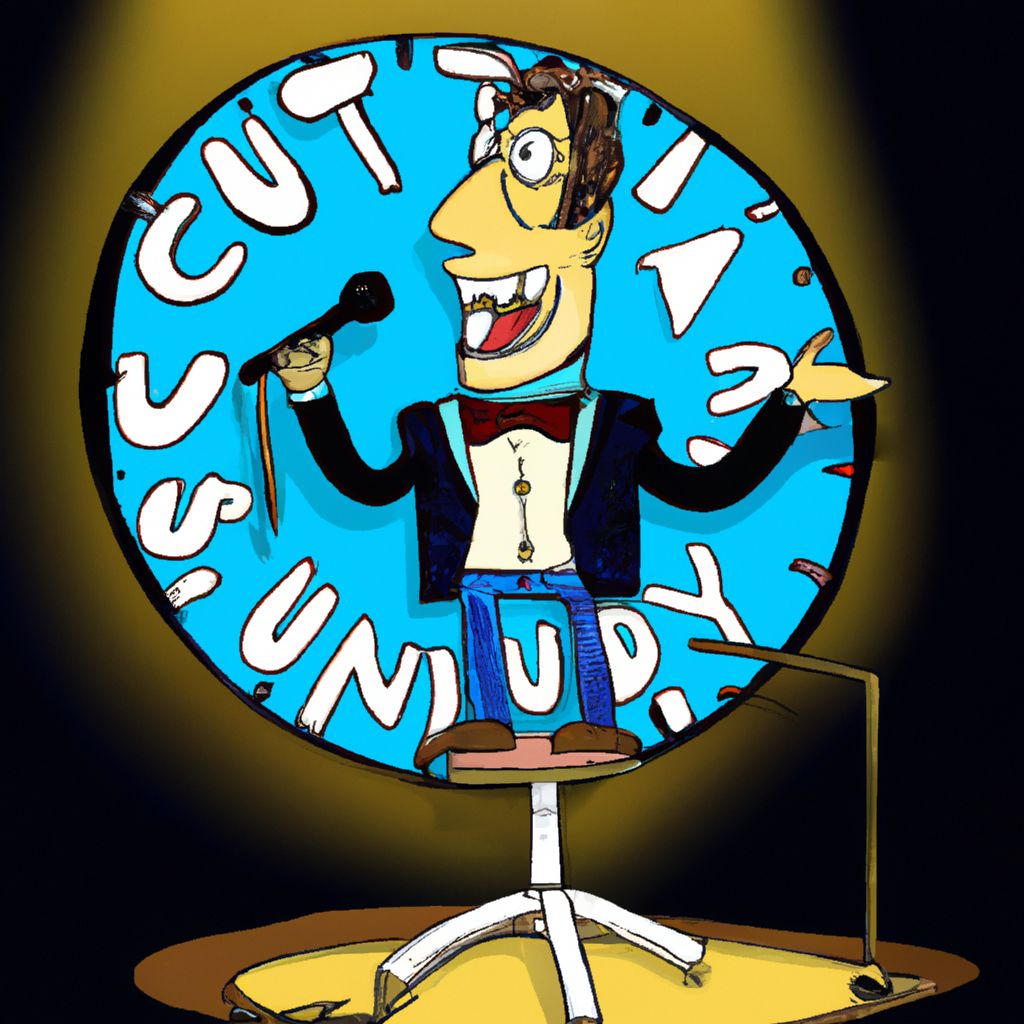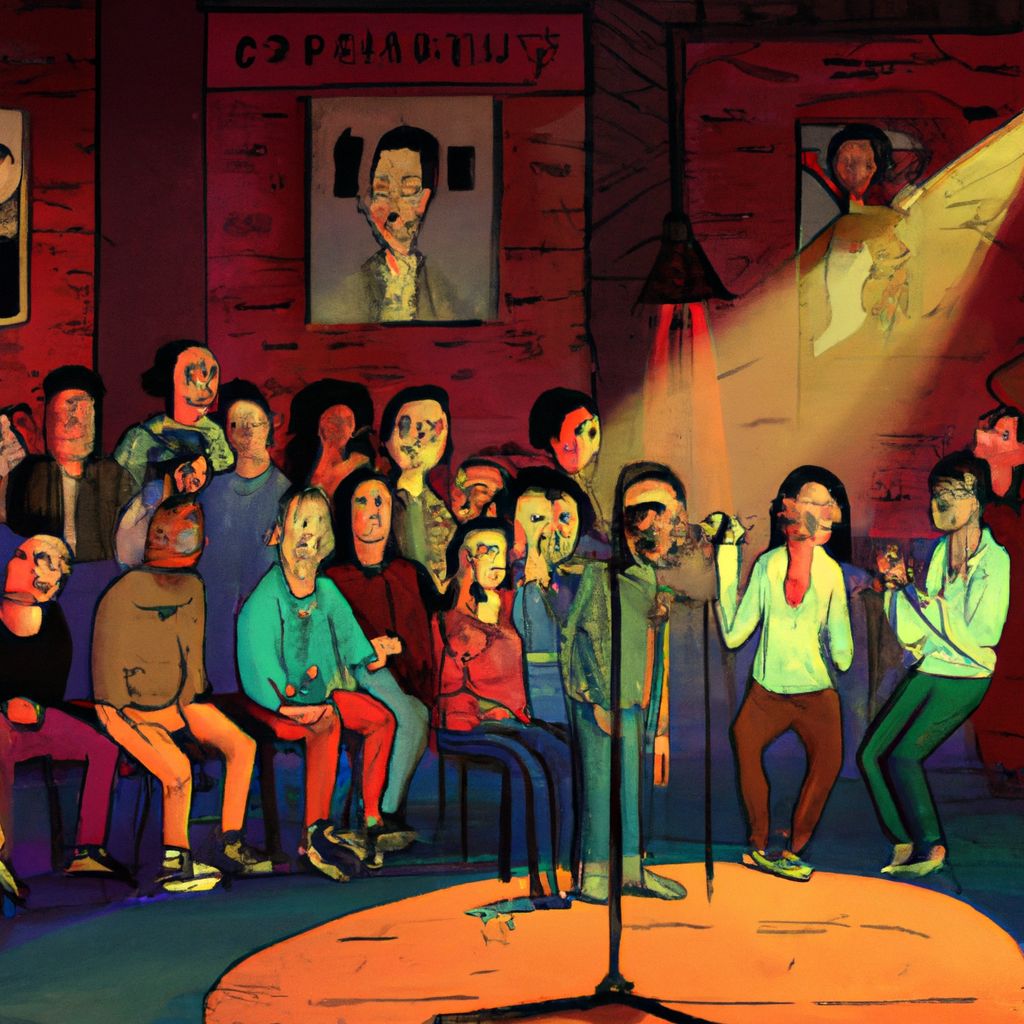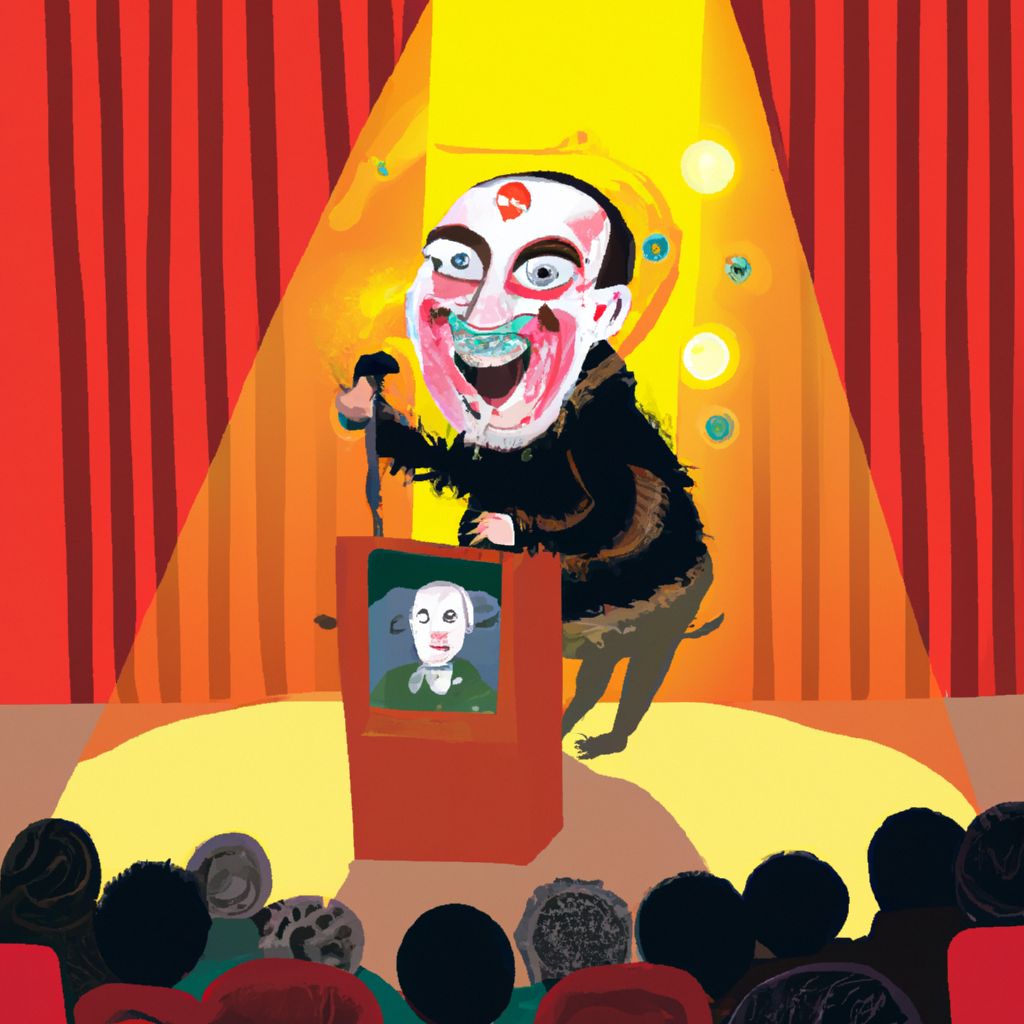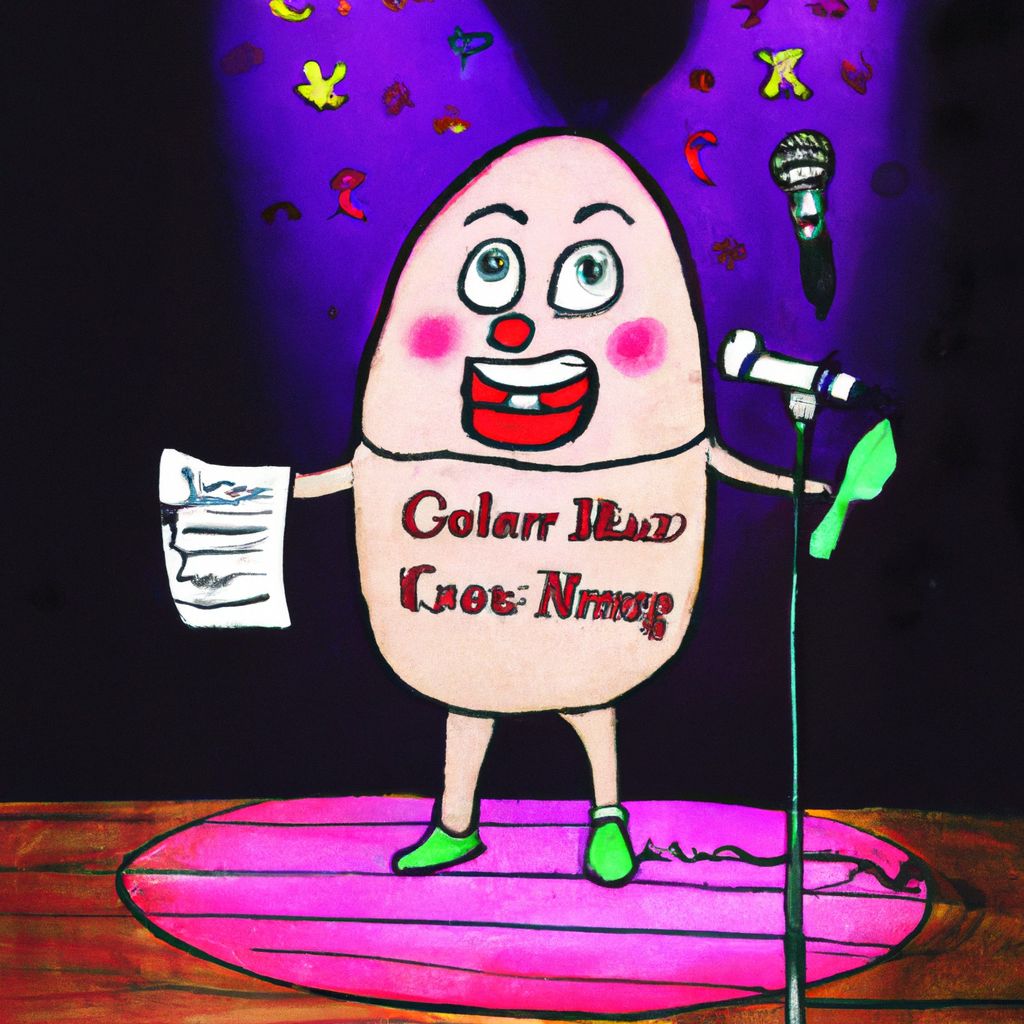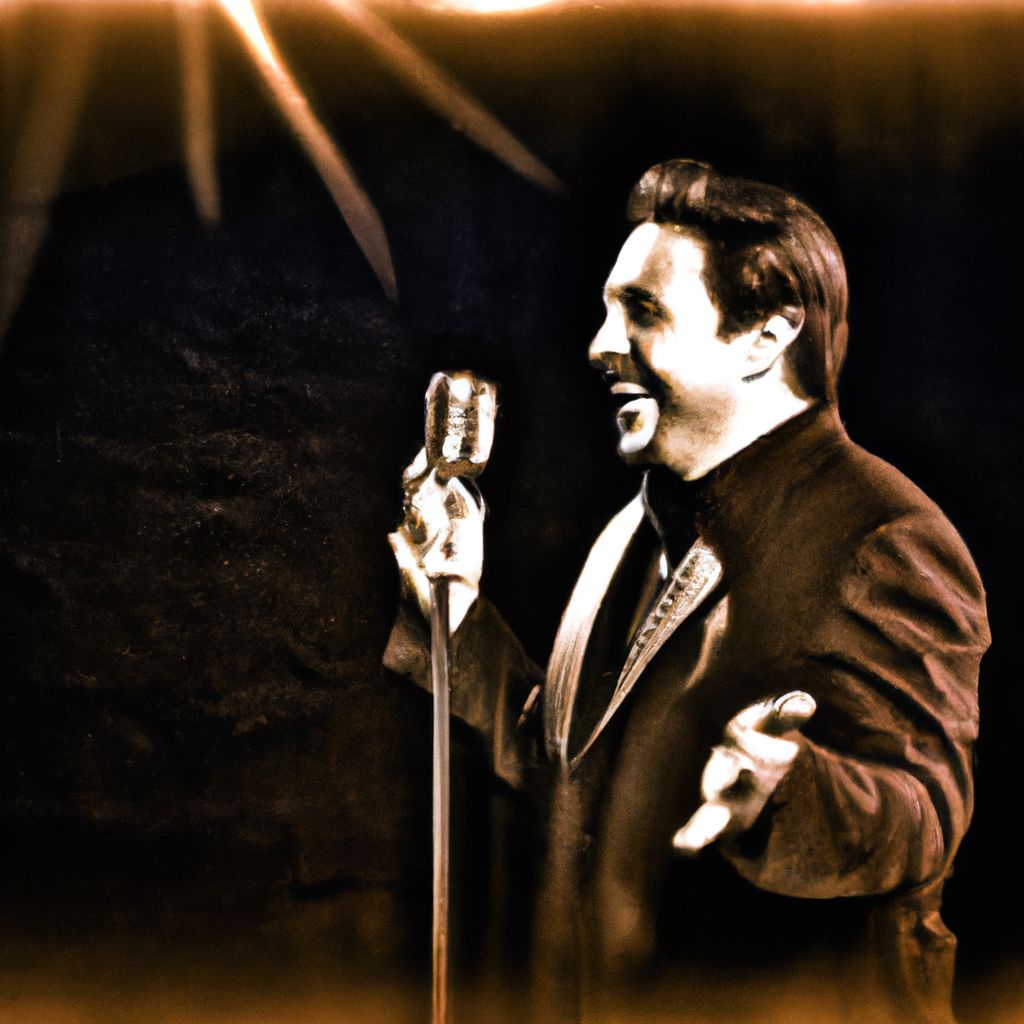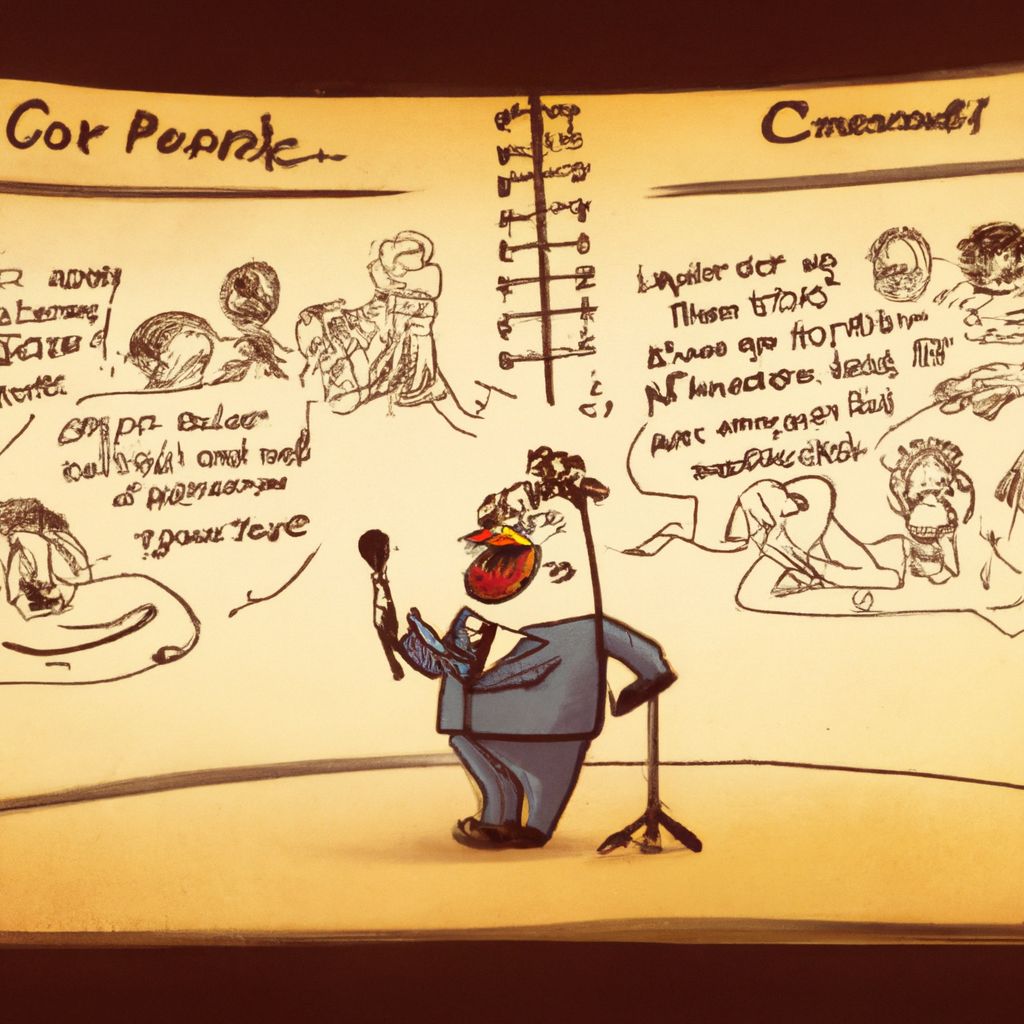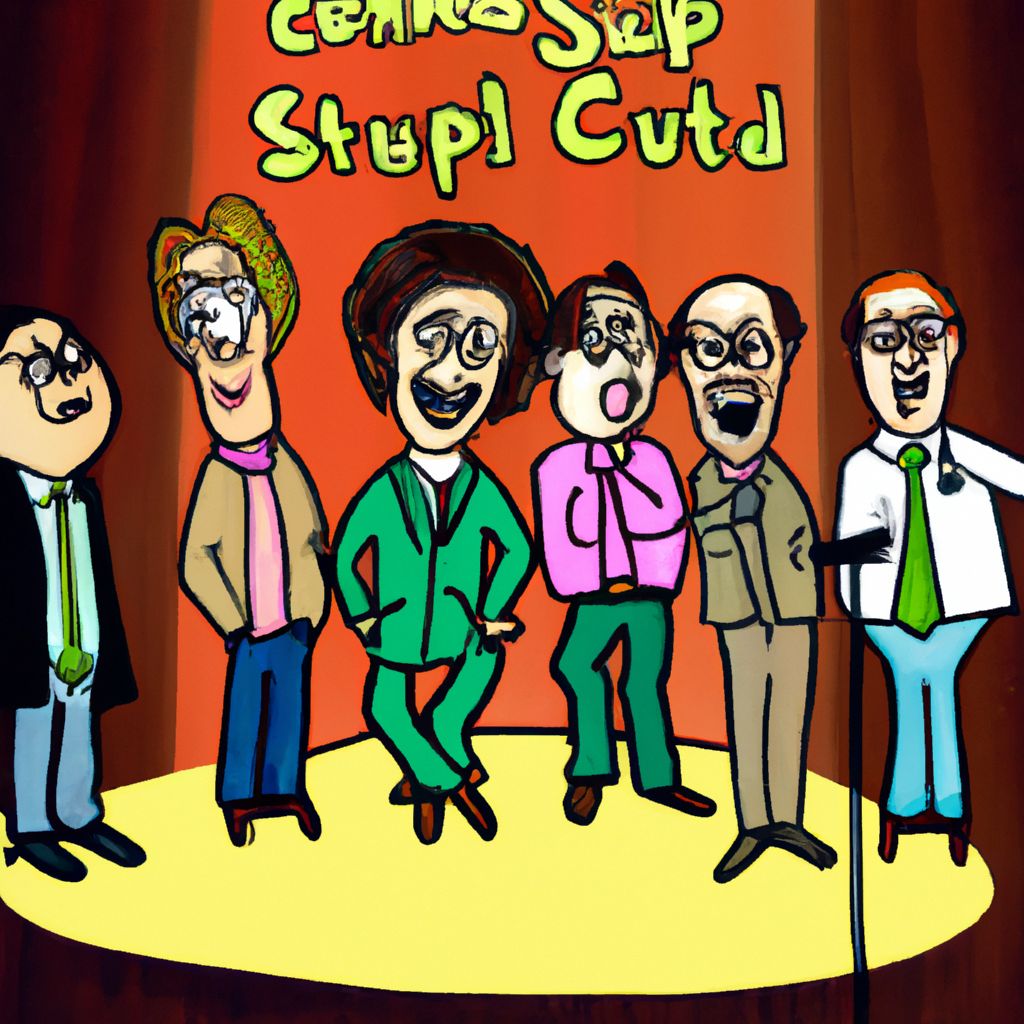- Understanding Comedic Timing in Standup Comedy
- The Anatomy of a Joke: Timing and Structure
- Mastering Pause and Rhythm: Lessons from Professional Comedians
- The Psychology Behind Timing in Comedy
- Improving Comedic Timing: Tips and Exercises
- The Role of Audience Interaction in Comedic Timing
- Timing and Technology: How Media Formats Influence Comedy
- Cultural Differences in Comedic Timing
- Conclusion: The Timeless Art of Timing in Comedy
Understanding Comedic Timing in Standup Comedy
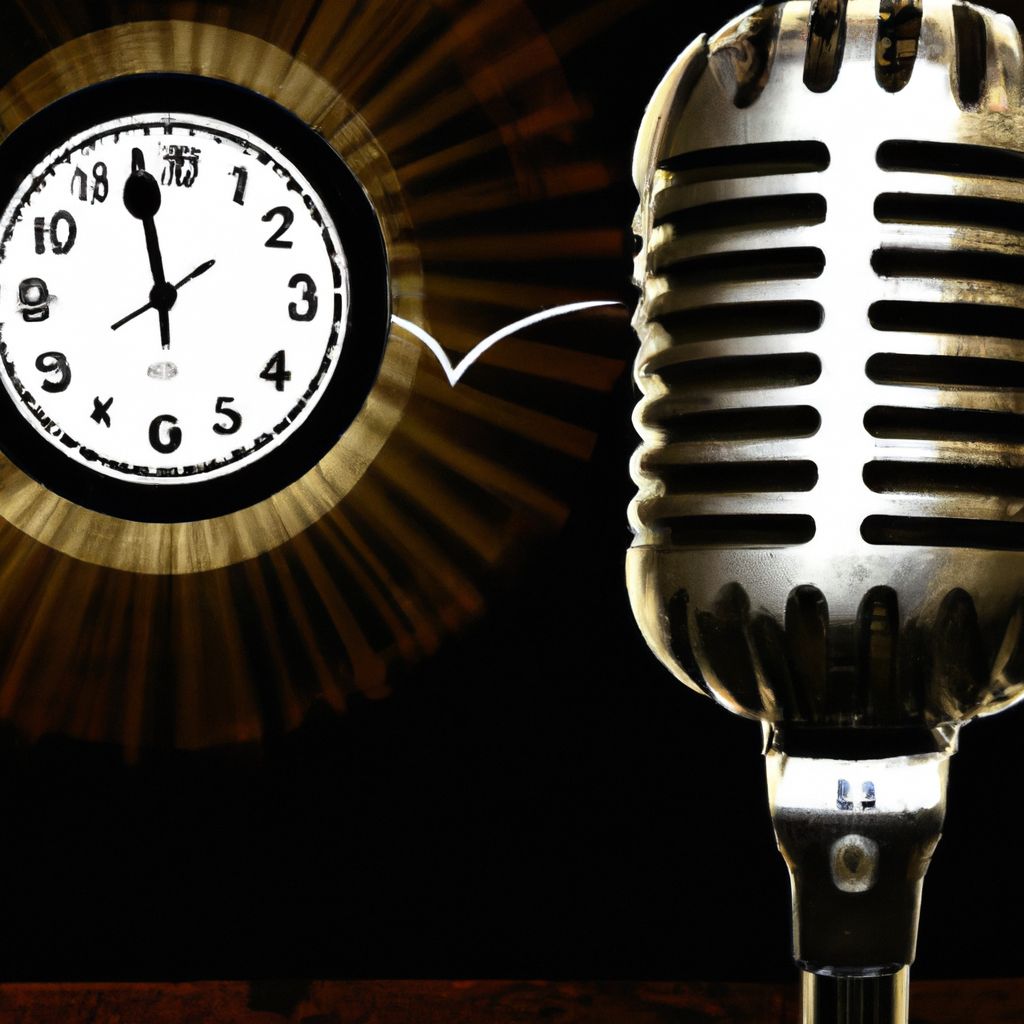
Comedic timing is a subtle and intricate art form within the larger performance of standup comedy. It involves the precise moment a comedian chooses to deliver a punchline, pause for effect, or react to the audience. The essence of comedic timing can be distilled into the rhythm and pace at which a joke is presented, which can drastically alter the audience's reception and reaction to the humor being conveyed.
The importance of comedic timing in standup cannot be overstated. It is the linchpin that can sway an entire performance from a series of jokes to a harmonious symphony of laughter. When a comedian masters timing, they create a dynamic ebb and flow that plays with the audience's expectations and emotions, often amplifying the humor beyond the words of the joke itself.
Timing is particularly critical when delivering punchlines—the climactic part of a joke where the humor is revealed. A well-timed punchline can elicit roars of laughter, while a mistimed one might result in a tepid response or, worse, complete silence. The difference between a joke landing successfully or falling flat often hinges on a comedian's ability to gauge the exact moment to reveal the punchline, allowing the tension to build and releasing it at the peak of anticipation.
Moreover, comedic timing is not just about the speed of delivery, but also about the pauses and silences. These breaks can serve to accentuate the humor, providing a necessary break for the audience to process the joke and prepare for the next. When executed adeptly, timing transforms a performance into an engaging dance between the comedian and the audience, where laughter becomes the beat.
The Anatomy of a Joke: Timing and Structure
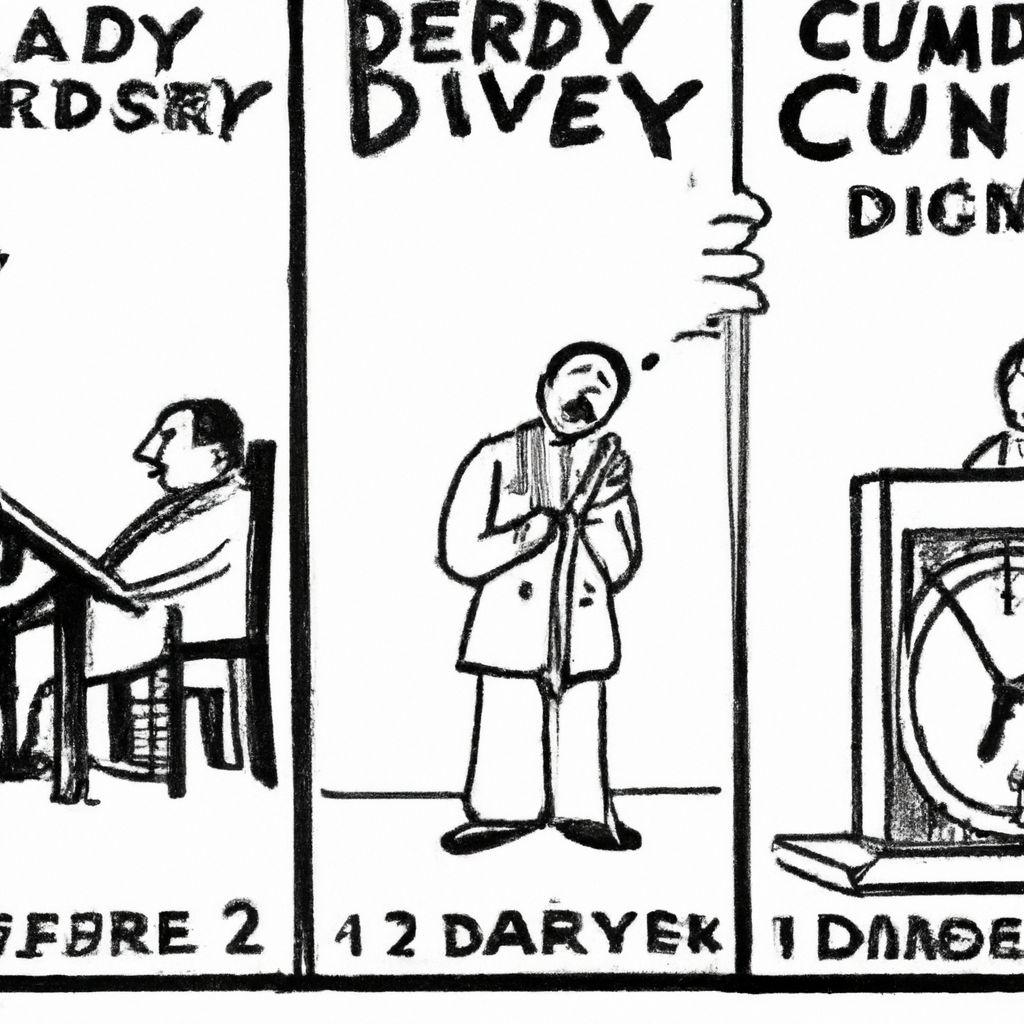
The anatomy of a joke is typically broken down into three main components: the setup, the delivery, and the punchline. Each of these stages is essential, and comedic timing plays a pivotal role in all three.
The setup is the foundation of the joke, where the comedian presents a scenario or premise that primes the audience for what's to come. Effective timing in the setup involves pacing the information so that it's easy to follow yet engaging enough to hold the audience's attention. For example, a rushed setup may leave the audience confused, whereas one that's too drawn out may lose their interest.
Delivery is the manner in which the comedian relays the joke—it's the bridge between the setup and the punchline. Timing in delivery might involve modulating one's speech, using gestures at strategic moments, or altering facial expressions to build anticipation. A well-timed delivery leverages these elements to heighten the audience's engagement.
The punchline is the culmination of the setup and delivery, where the twist or humorous element is revealed. Timing here is about precision; a punchline delivered too soon can undercut the buildup, while one that's delayed may cause the audience's attention to wane. For instance, a comedian might pause just before the punchline to create suspense, then deliver it right as the audience leans in—a technique that can significantly amplify the impact of the joke.
Pacing, the overall speed at which a joke unfolds, must be tailored to the content of the joke and the comedian's style. Some jokes benefit from a rapid-fire delivery, which can create a sense of urgency or a barrage of humor that keeps the audience on their toes. Other jokes might require a slower pace, allowing the audience to savor the setup and anticipate the punchline.
Pauses are another critical element of comedic timing. They provide space for the audience to absorb the joke, react, and prepare for the next segment. A well-placed pause acts like a punctuation mark, emphasizing certain elements of the joke or creating comedic tension that makes the punchline more impactful when it arrives.
For example, consider the joke: "I told my wife she was drawing her eyebrows too high. She looked surprised." The setup introduces a scenario, the delivery involves a brief pause after "too high," and the punchline "She looked surprised" comes with a second, slightly longer pause for the audience to connect the dots. The comedic timing of the pauses is crucial; without them, the humor may not fully resonate.
Mastering Pause and Rhythm: Lessons from Professional Comedians
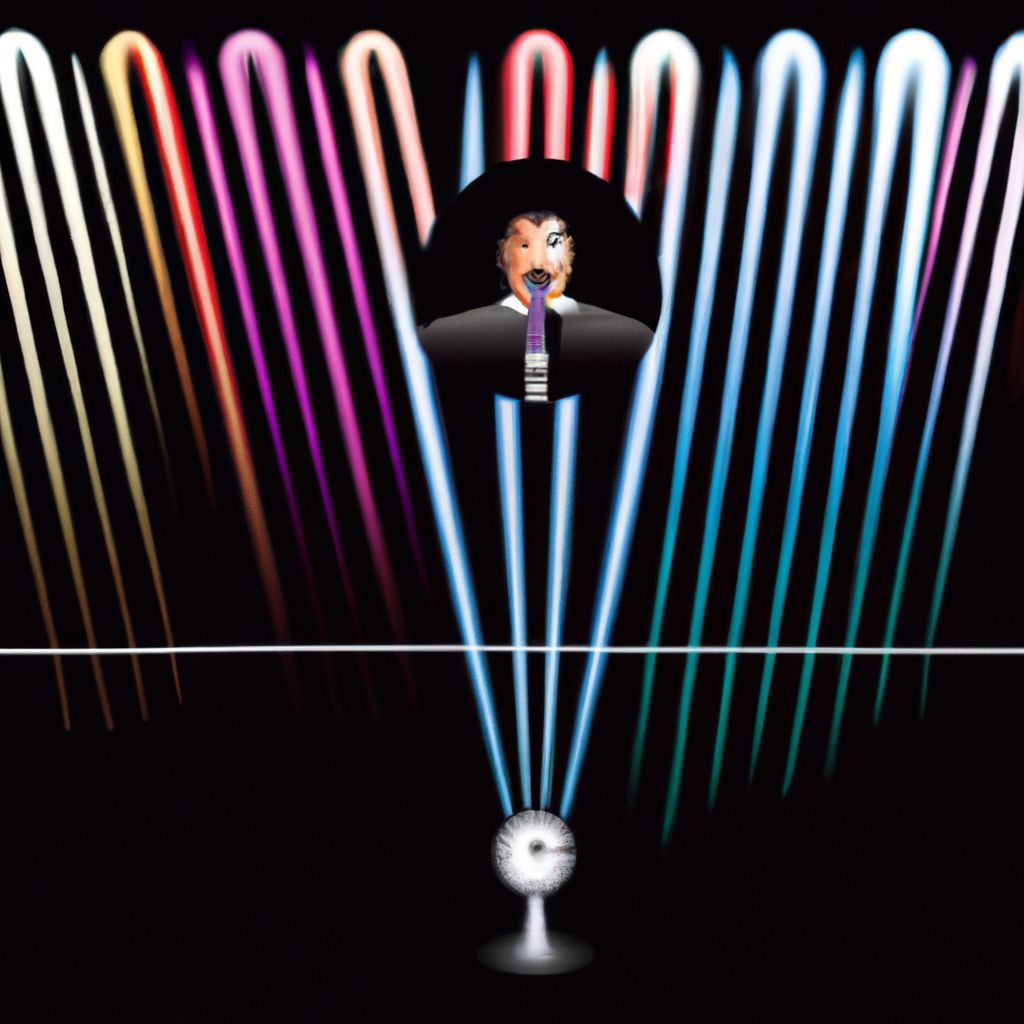
Professional comedians often exhibit a keen understanding of how the strategic use of pause and rhythm can significantly enhance their performances. By mastering these elements, they can manipulate comedic timing to maximize laughter and audience engagement.
A prime example is the legendary comedian, Dave Chappelle, who is known for his impeccable sense of timing. He often employs long pauses after a setup, allowing the audience's anticipation to swell before landing the punchline. This technique builds tension, and the subsequent release with the punchline creates a powerful wave of laughter. In one of his routines, Chappelle sets up a joke about technology, then pauses as if reflecting on the absurdity of the premise, before delivering the punchline with perfect timing, eliciting a strong audience response.
Ellen DeGeneres, on the other hand, uses a rhythmic approach in her comedy, often pacing her stories with a musical cadence. She'll introduce a story with a steady tempo and then abruptly pause, creating a stark contrast that highlights the humor. For instance, in a bit about procrastination, she might say, "I was going to do this yesterday…" and follow with a pause, allowing the audience to fill in the gap with their own experiences before she delivers the punchline, "…but then I didn't." The rhythm and pause work in tandem to make the punchline more relatable and impactful.
Comedian George Carlin was known for his rapid-fire delivery and sharp rhythm, which he used to build momentum in a routine. He would string together a series of observations with a quick pace, and then insert a sudden pause before a punchline, creating a jarring and often hilarious effect. His timing, both in terms of the speed of his delivery and the placement of his pauses, was meticulously crafted to keep the audience hanging on his every word.
Another example is the observational humor of Jerry Seinfeld, who often uses pauses not only for effect but also to give the audience a chance to envision the scenario he's painting. His rhythm is typically conversational, which makes his pauses seem natural and timed to coincide with the audience's internal processing of the joke. Seinfeld might describe an everyday situation, insert a well-timed pause as he shifts to an absurd observation, and then cap it off with a punchline that resonates due to the rhythmic journey he's taken the audience on.
These comedians demonstrate that the manipulation of pause and rhythm is a form of art in standup comedy. They show that knowing when to speak and when to remain silent, and understanding the natural ebb and flow of human conversation, are vital skills for capturing and directing an audience's laughter.
The Psychology Behind Timing in Comedy
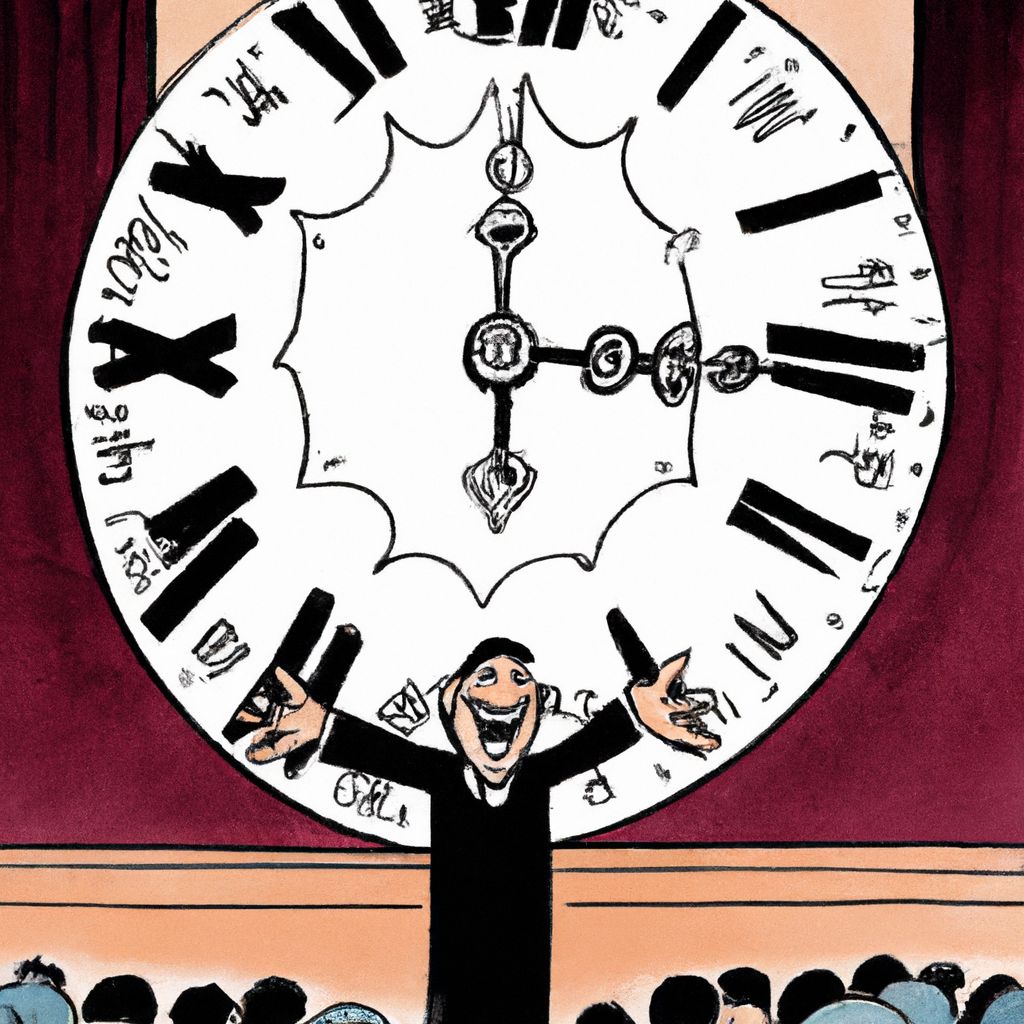
The psychological underpinnings of comedic timing are rooted in the audience's natural cognitive and emotional responses. Timing plays a crucial role in shaping these responses, often determining the success of the comedic experience.
Anticipation is a key psychological aspect that comedians tap into with timing. As an audience listens to a setup, they begin to form expectations about where the joke might be heading. The tension builds as they await the resolution. The effectiveness of the punchline is heavily influenced by the timing with which it is delivered—the longer a comedian waits (without losing the audience), the greater the anticipation and the potential for a larger comedic payoff.
Surprise is another significant element that relies on timing. Comedians often use timing to lead the audience down one path, only to surprise them with an unexpected twist at the last moment. This surprise can generate a strong emotional response, as it triggers a release of tension and a subsequent flood of endorphins, enhancing the feeling of joy. The precise moment at which the twist is revealed is critical; too early and the joke may be predictable, too late and the audience may lose interest.
Timing also plays a role in subverting expectations. A well-timed joke often includes elements that seem to head towards a logical conclusion, but the punchline deviates from this path, creating a juxtaposition that can be both surprising and humorous. For example, a comedian might pause right before delivering a punchline that goes against the grain of the setup, thus subverting expectations and triggering laughter. This is often seen in wordplay or misdirection jokes, where the timing of the punchline's delivery is essential to catch the audience off-guard.
The psychological aspect of timing in comedy is complex and nuanced. It involves understanding human behavior, including how people process information and emotional cues. Comedians must also be adept at reading the room, sensing the collective mood and responses of the audience, and using timing to adjust their performance in real-time, ensuring that each punchline lands with the intended effect.
Ultimately, the psychology behind timing in comedy reveals that it is not just about the words used, but how and when they are delivered. The anticipation, surprise, and subversion of expectations all contribute to the laughter that follows, and these elements are all intricately tied to the comedian's control of timing.
Improving Comedic Timing: Tips and Exercises
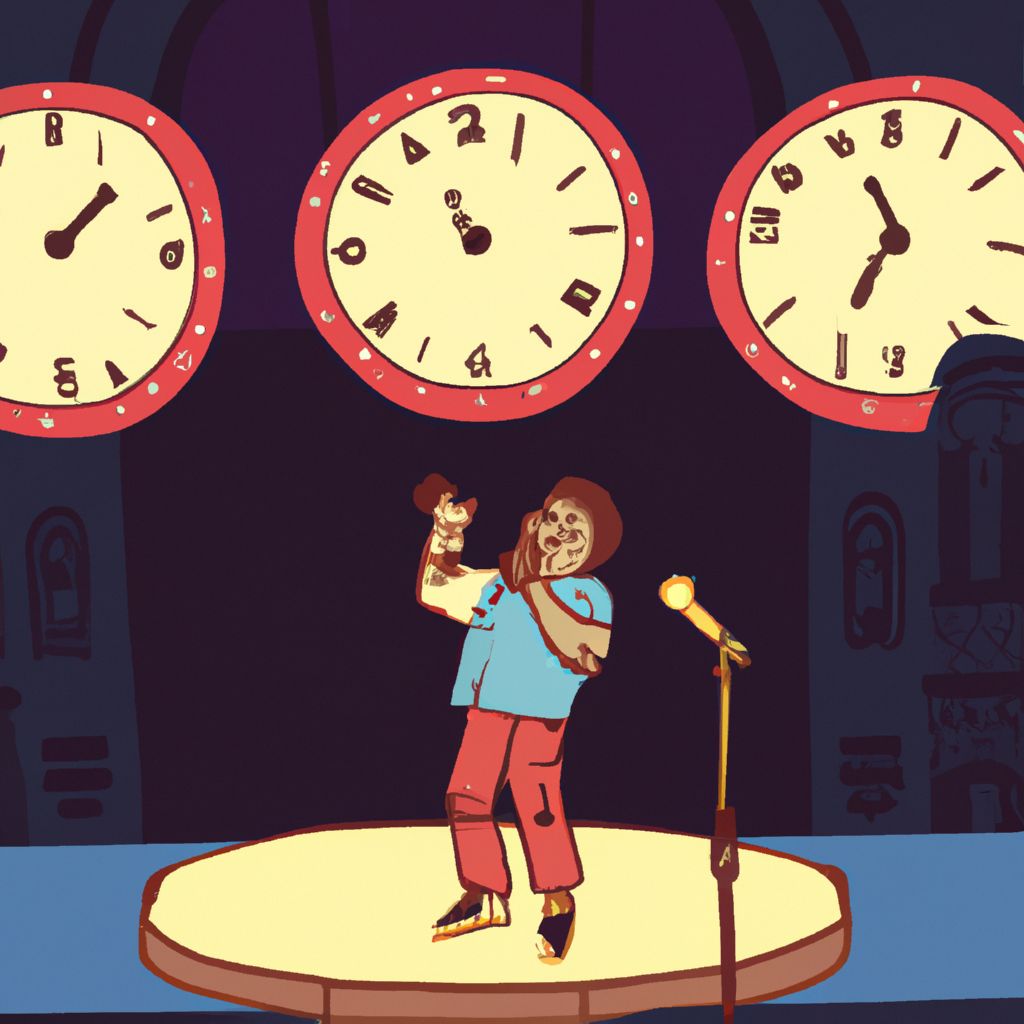
Improving comedic timing is an essential pursuit for aspiring comedians, and there are several practical tips and exercises that can help refine this skill:
- Practice Regularly: Like any skill, comedic timing improves with practice. Aspiring comedians should seize every opportunity to perform—whether at open mics, in front of friends, or even alone in front of a mirror—to hone their timing.
- Record Performances: Recording sets allows comedians to review and critique their timing. Watching a performance back can reveal moments where a pause was too short or a punchline too rushed, providing clear areas for improvement.
- Seek Constructive Feedback: Getting input from peers, mentors, or audience members can offer valuable insights into how timing is perceived from the other side of the stage. Comedians should listen to feedback with an open mind and look for patterns in the responses.
- Analyze Professional Sets: Studying performances by accomplished comedians can teach rhythm, pacing, and the use of silence. Aspiring comedians should pay close attention to how these professionals manipulate timing for effect.
Additionally, the following exercises can directly target and develop comedic timing:
- Pause Exercises: Practice telling a joke and intentionally insert pauses at various points. Experiment with different lengths of pauses to observe how they affect the audience's anticipation and reaction.
- Varying Delivery Speeds: Try delivering the same joke at different speeds. A faster delivery can heighten energy, while a slower pace may build more tension. Identify which speed works best for the joke's content and the intended reaction.
- Reaction Timing: Work on reacting to audience feedback in the moment. If a laugh comes earlier or later than expected, adjust the timing of the next segment accordingly. This improvisational skill is crucial for maintaining an organic flow.
- Misdirection Practice: Write jokes that have an element of misdirection and practice the timing of the reveal. The goal is to lead the audience in one direction and then swiftly pivot at the right moment for maximum comedic effect.
- Rhythm Matching: Comedians can improve their timing by speaking along with recordings of their favorite sets, matching the professional's rhythm and pauses. This can help internalize a sense of timing that can later be adapted to one's style.
Improving comedic timing is a process of trial and error, and these tips and exercises are tools to guide aspiring comedians through that journey. With dedication and self-awareness, the skill of timing can be sharpened, leading to more effective and memorable performances.
The Role of Audience Interaction in Comedic Timing
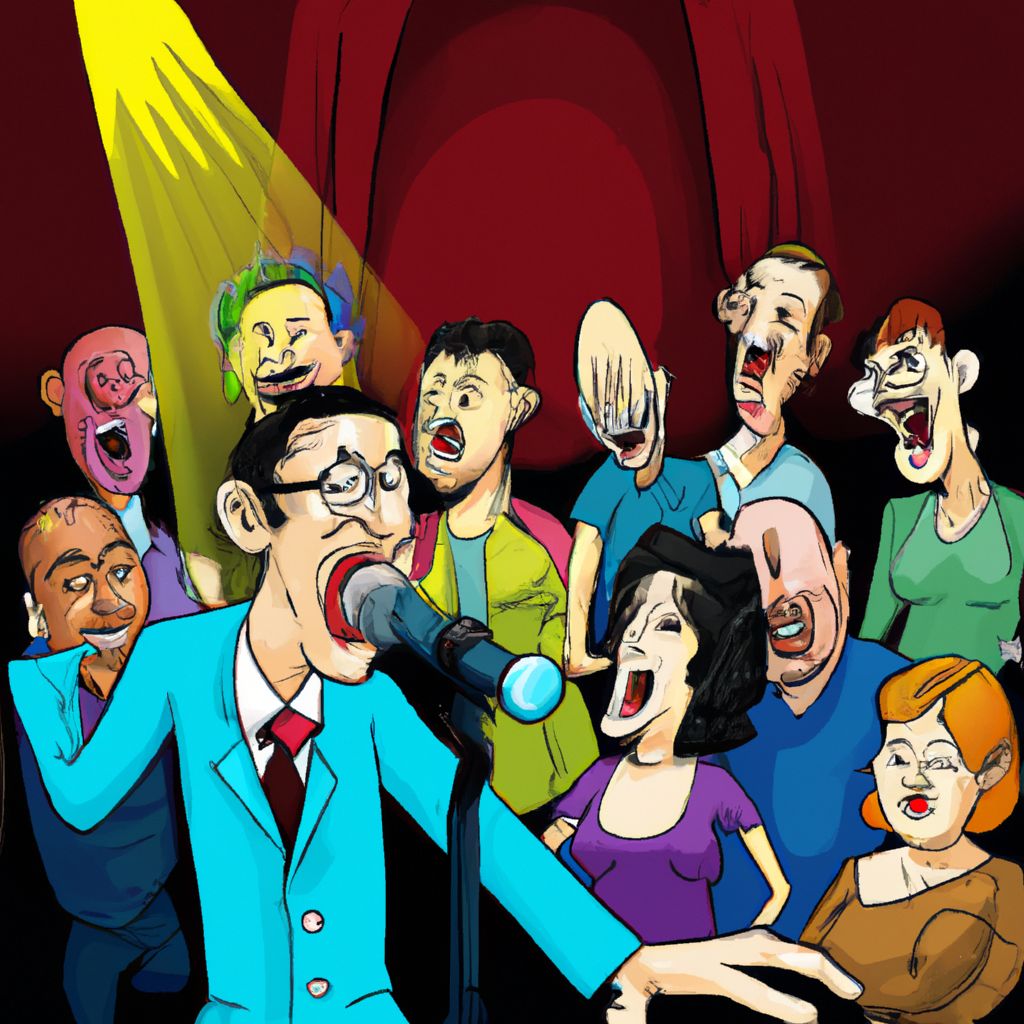
Audience interaction is a dynamic factor that significantly influences comedic timing. A comedian must be adept at reading the room and adjusting their performance based on the audience's reactions. This real-time feedback loop can dictate the pace of the routine and the timing of jokes.
Comedians often start by gauging the energy level of the audience; a more responsive crowd may encourage a quicker pace, while a subdued audience might require a slower approach to allow the humor to resonate. The immediate feedback from the audience, such as laughter or silence, is a crucial cue that helps the comedian adjust the timing of their delivery, pauses, and punchlines on the fly.
Handling hecklers is another aspect of audience interaction that requires impeccable timing. A well-timed response to a heckler can turn a potentially disruptive moment into a highlight of the performance. Quick wit and the ability to remain composed are essential, as is the skill of delivering a comeback at the optimal moment to maintain control of the show.
Here are some tips for incorporating audience responses into an act and handling hecklers:
- Active Listening: Pay attention to not only the volume of laughter but also the tone and mood of the audience. Use these cues to adjust the timing of the next joke or segment.
- Pausing for Effect: After a punchline, give the audience time to react. If laughter is rolling, wait for it to peak and begin to ebb before moving on. This can enhance the impact of the joke and keep the audience engaged.
- Building on Reactions: If a particular joke or topic elicits a strong response, consider extending it or calling back to it later in the set, using timing to reinforce the humor.
- Handling Hecklers: Develop a repertoire of comebacks for hecklers, and deliver them with timing that demonstrates confidence and control. A well-timed retort can often win the crowd's support.
- Improvisation Skills: Improv training can enhance a comedian's ability to think on their feet and respond spontaneously to audience interactions, using timing to steer the show positively.
- Non-Verbal Communication: Use body language and facial expressions to respond to audience reactions, sometimes a look or a gesture at the right moment can be as powerful as words.
Audience interaction is an integral part of the live comedic experience, and the ability to adjust timing accordingly is a testament to a comedian's skill. By embracing and responding to audience feedback, comedians can create a more immersive and memorable performance.
Timing and Technology: How Media Formats Influence Comedy
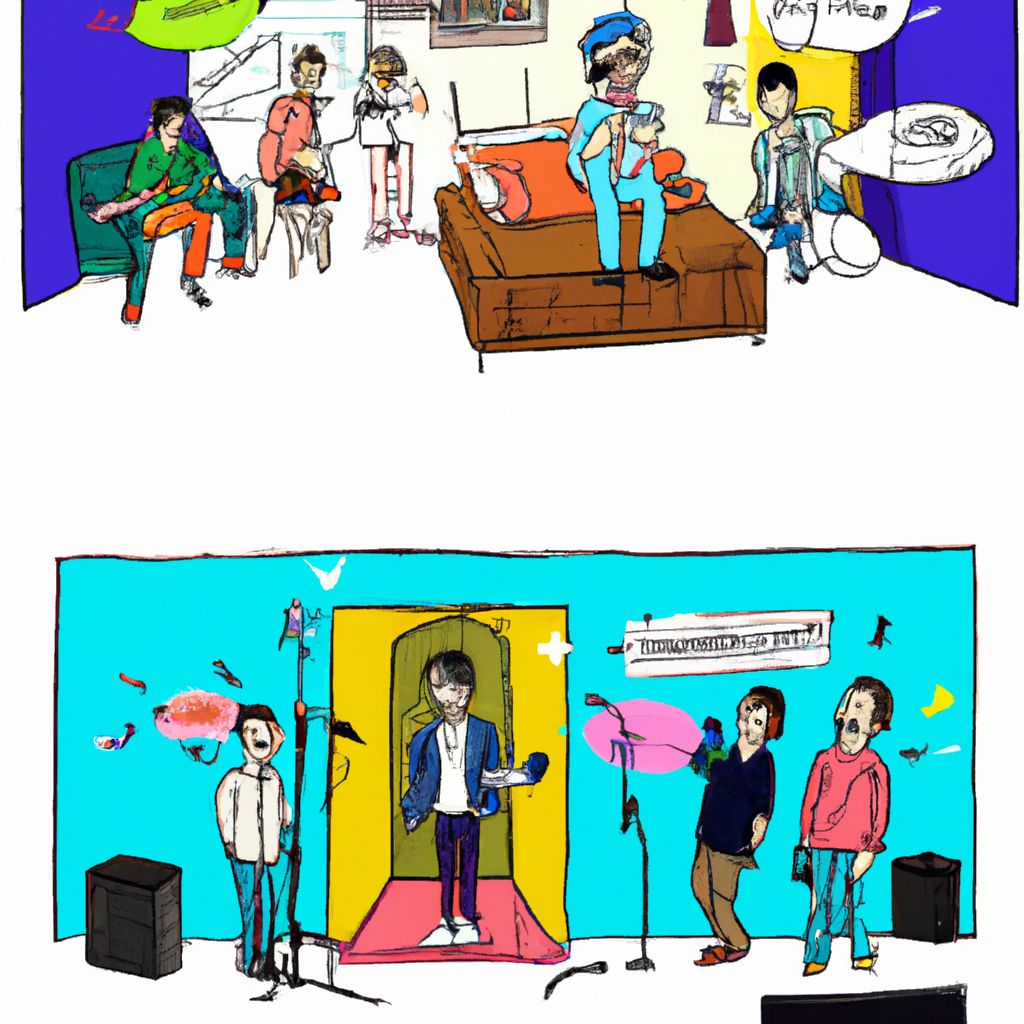
The medium through which comedy is delivered can have a significant impact on comedic timing, each with its unique set of challenges and advantages.
Live Shows: Live performances offer comedians the most direct and immediate interaction with their audience. The feedback is real-time, allowing comedians to adjust their timing on the fly. The challenge in live settings is the unpredictability; audience mood can vary greatly, and external factors like hecklers can disrupt timing. However, the advantage is the organic energy and connection that can be harnessed to enhance comedic timing.
Television: Television comedy, whether in sitcoms or standup specials, operates within a structured format that often includes set time limits, commercial breaks, and the potential for editing. Comedians must adapt their timing to these constraints, and they may receive laughter cues from live studio audiences or laugh tracks post-production. The challenge is to maintain natural timing despite these artificial elements, but the advantage is the ability to reshoot or edit to perfect the comedic timing before airing.
Online Videos: With the rise of digital platforms like YouTube and social media, comedians have more control over their content and its timing. They can edit videos to achieve precise comedic timing and can also take advantage of the platform's immediacy and reach. The challenge here is to create timing that translates effectively without the feedback of a live audience, which can be mitigated by paying close attention to pacing and the platform's viewing habits.
Each media format requires a different approach to timing, and comedians must be versatile in adapting their skills to each setting. Live shows demand spontaneity and adaptability, television requires adherence to production demands while maintaining naturalness, and online formats offer control and the potential for iterative refinement based on viewer feedback.
Ultimately, regardless of the medium, the goal remains the same: to deliver jokes with timing that maximizes humor and connects with the audience.
Cultural Differences in Comedic Timing
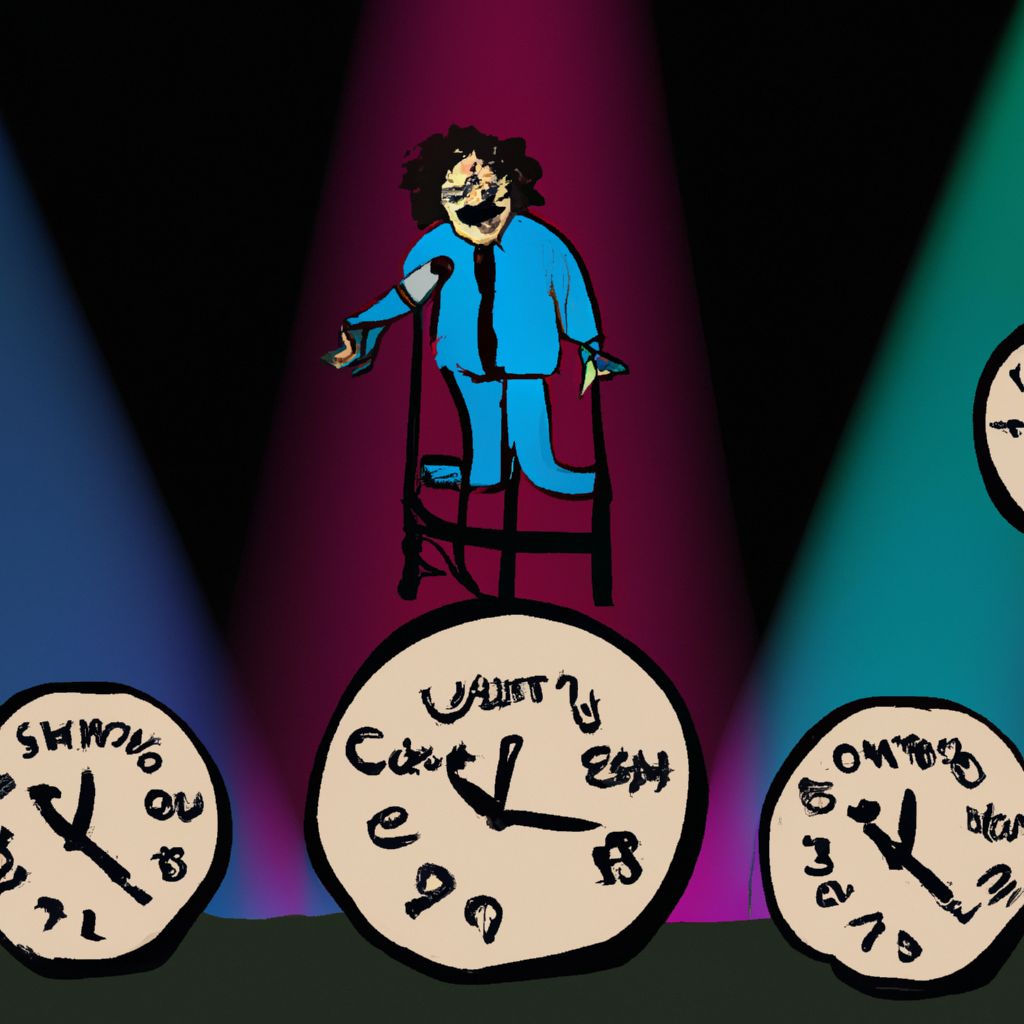
Comedic timing is not just a universal skill; it's also subject to cultural nuances that can affect how humor is perceived and enjoyed. Different cultures have varying rhythms of speech, storytelling techniques, and expectations for humor, all of which play into the timing of comedy.
Some cultures prefer a rapid-fire style of comedy, where jokes are delivered in quick succession, while others may appreciate a slower, more deliberate pace, allowing for reflection and anticipation. The types of pauses, the length of stories, and the delivery of punchlines can all vary widely across cultural contexts. For instance, British humor is often characterized by a dry, understated delivery, whereas American comedy might lean towards a more explicit and high-energy style.
When jokes don’t translate well internationally, it is often due to a lack of shared context or differing comedic sensibilities. Humor can be deeply tied to language, idiomatic expressions, historical references, and societal norms—all of which may not be familiar to someone from a different culture. This can result in the comedic timing being off, as the audience may not recognize the cues for when to laugh.
For comedians performing for diverse audiences, it’s important to understand these cultural contexts and timing preferences:
- Research: Before performing in a different cultural setting, research local humor styles, common themes, and audience expectations to tailor the timing of the act appropriately.
- Observe: Watch local comedians and pay attention to their timing—how they set up jokes, how long they pause, and how the audience reacts. This can provide valuable insights into cultural timing nuances.
- Adapt: Be prepared to adapt the act on the spot based on audience reactions. If certain jokes or timing aren't landing, be flexible enough to adjust the performance accordingly.
- Universal Themes: Focus on humor that transcends cultural barriers, such as physical comedy or universally relatable situations, where the timing might be more universally understood.
- Engage: Engage with the audience post-show to gain feedback on which timing elements worked and which didn’t, using this information to refine future performances.
Understanding and adapting to cultural differences in comedic timing is a complex but rewarding endeavor. Comedians who can navigate these nuances are better equipped to connect with diverse audiences and deliver humor that resonates across cultural boundaries.
Conclusion: The Timeless Art of Timing in Comedy
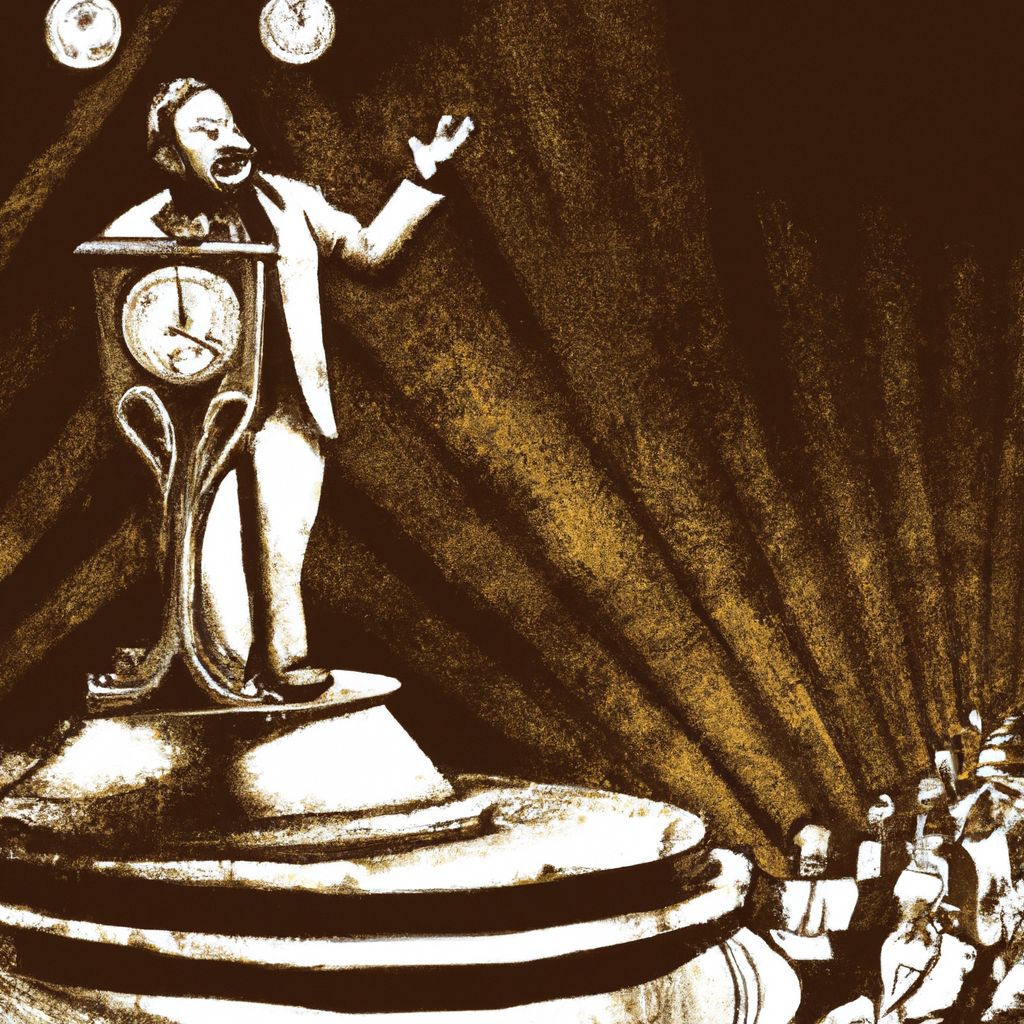
Comedic timing is an essential ingredient in the craft of standup comedy, serving as the heartbeat of a performance. It orchestrates the flow of a routine, dictates the delivery of punchlines, and shapes the audience's engagement and response. The structure of a joke—comprising the setup, delivery, and punchline—relies heavily on precise timing to create humor that resonates.
Professional comedians demonstrate the power of pause and rhythm, using them to build anticipation, surprise, and to subvert expectations. The psychological aspects of comedic timing are deeply rooted in human behavior, leveraging anticipation and the element of surprise to enhance the comedic experience.
For aspiring comedians, improving timing is a matter of practice, analysis, and adaptation. Recording performances, seeking feedback, and engaging in targeted exercises can sharpen this critical skill. Moreover, a comedian's ability to read the room and interact with the audience can greatly influence the effectiveness of their timing.
Different media formats present unique challenges and opportunities for comedic timing. Whether it's a live show, a television broadcast, or an online video, each requires a tailored approach to ensure that the humor lands as intended. Additionally, cultural differences play a significant role in comedic timing, demanding a nuanced understanding of diverse audiences to ensure international appeal.
While comedic styles and preferences may evolve over time, the fundamental importance of timing in comedy remains a constant. It's a timeless art that transcends changing tastes and trends. As we continue to enjoy the laughter brought about by skilled comedians, let us appreciate the meticulous craft behind well-timed humor and the ongoing dedication it takes to master this art form.


